
THE XERCES SOCIETY FOR INVERTEBRATE CONSERVATION Aquatic Invertebrates in Pacific Northwest Freshwater Wetlands |
| Identify taxa |
|
Adult dragonflies and damselflies are to the aquatic insect world what butterflies are to terrestrial insects - big, showy, beautiful, and well-known cultural icons. Likenesses of adult dragonflies in particular can be found in lots of everyday decorations, clothing, art, and printed materials. Adult odonates can be intensely colorful, active, and often noisy. Sit by a healthy wetland long enough on a summer day, and there's a good chance you'll hear a midair battle raging between two fiercely territorial male dragonflies. If you're very still and very lucky, a dragonfly might even land on or near you while it devours an insect that fell prey to its speed and agility. The Odonata are valuable indicators of habitat type and water quality, although some nymphs can be very tolerant of habitat disturbance. The aquatic larvae of dragonflies and damselflies are not as well-known or showy as adults, but they have incredible adaptations for preying on other insects and surviving in aquatic environments. Larvae (sometimes called nymphs) are typically found in still waters and are well camouflaged, lurking on rocks or plants in search of food. To capture their prey, they use a lethal modified mouthpart that makes them unique from all other insects. The labium (an unassuming mouthpart in most aquatic insects) has evolved into a grabbing arm with toothed pincers at the tip. In the blink of an eye, their labium can extend in front of the head, grab hold of prey, and pull it back to their hungry mouth. To breathe, larvae extract dissolved oxygen from water drawn into a chamber inside their abdomen (the rectum). Dragonfly larvae can even use that water as jet propulsion if they need to move quickly by contracting the muscles in their rectum, forcing the water to shoot out and propel them rapidly forwards. Dragonfly and damselfly larvae can be distinguished from all other macroinvertebrates by the highly modified labium described above. The labium is usually held pressed tight to the head, giving the face a mask-like appearance. To distinguish dragonflies from damselflies, look no further than the tip of their abdomens. Dragonfly larvae are stout bodied with a thick abdomen that ends in 3 to 5 short points. Damselfly larvae are usually long and thin with three flattened leaf-like plates at the tip of their abdomen. These plates may be used to extract oxygen from the water and as a rudder to help them hold their position in water. In the wetlands of the Pacific Northwest, you are most likely to find dragonflies in the family Libellulidae (common skimmers) and damselflies in the Coenagrionidae (narrow winged damselflies) and Lestidae (spreadwinged damselflies) families. For an incredible resource of images and information, visit some of the on-line efforts of Odonata specialist Dennis Paulson of the Slater Museum of Natural History at the University of Puget Sound (outside link). |
| Key to Families | |||
|
Dragonflies Stout body; three to five short stiff points at the tip of the abdomen; head is usually narrower than the thorax and abdomen. |
 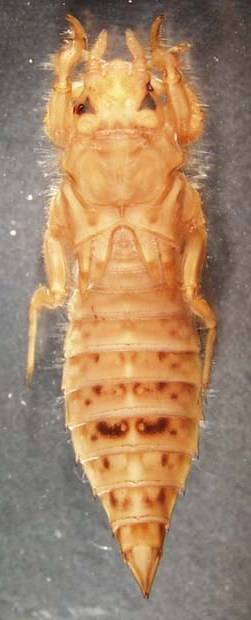 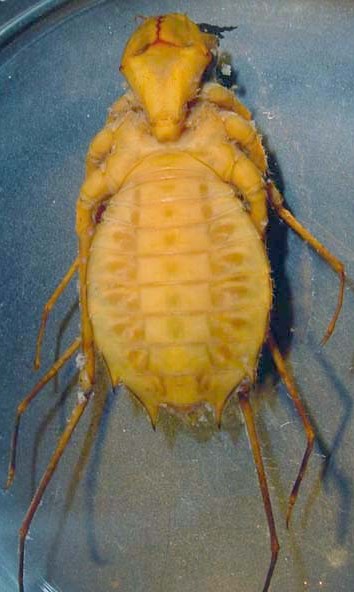 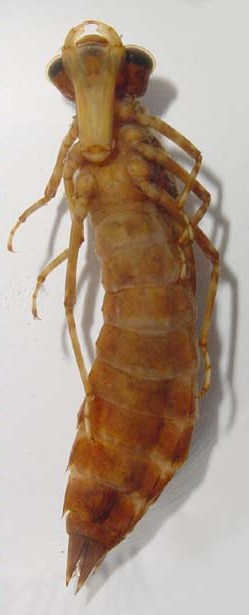 |
|
|
Damselflies Long, slender body; head is wider than the thorax and abdomen; two to three elongated, flattened plates at the end of the abdomen. |
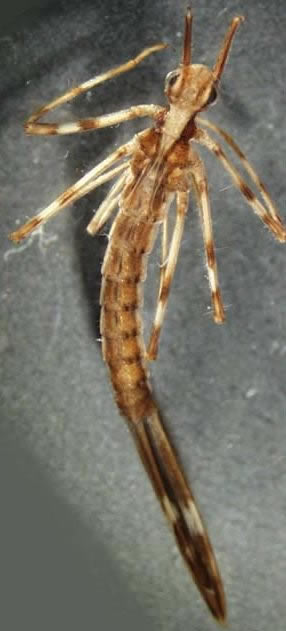 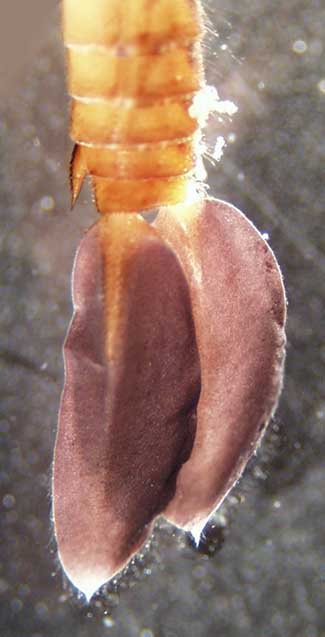  |
|
Aeshnidae (darners) |
© 2007 Xerces Society
Contact info@xerces.org